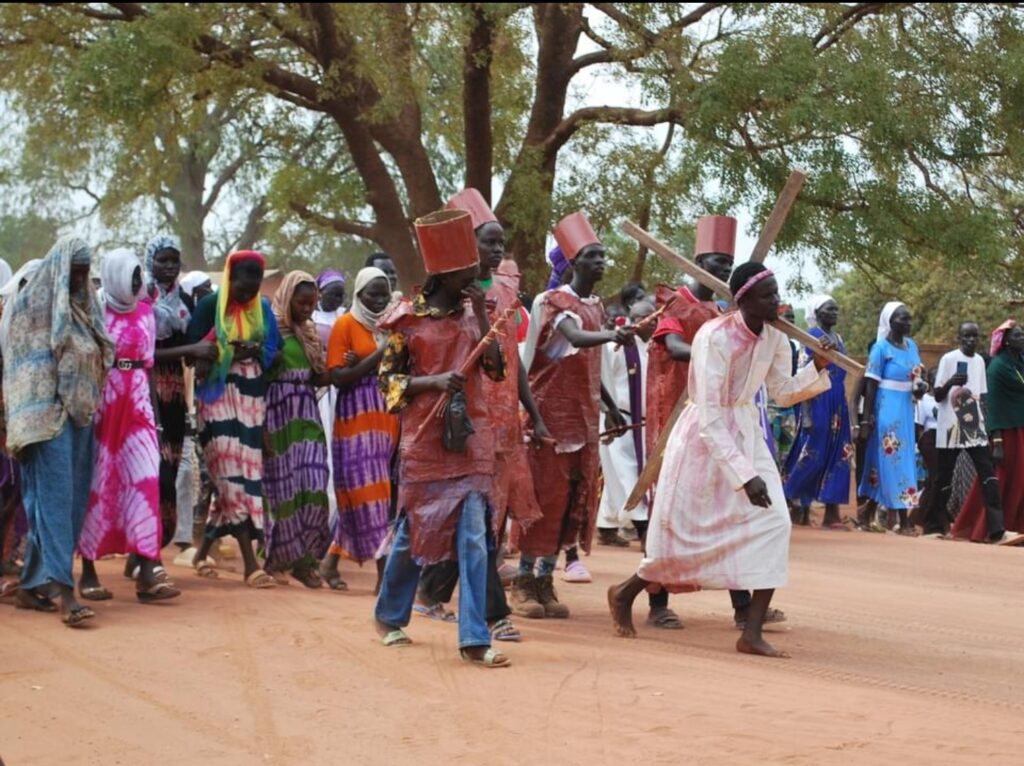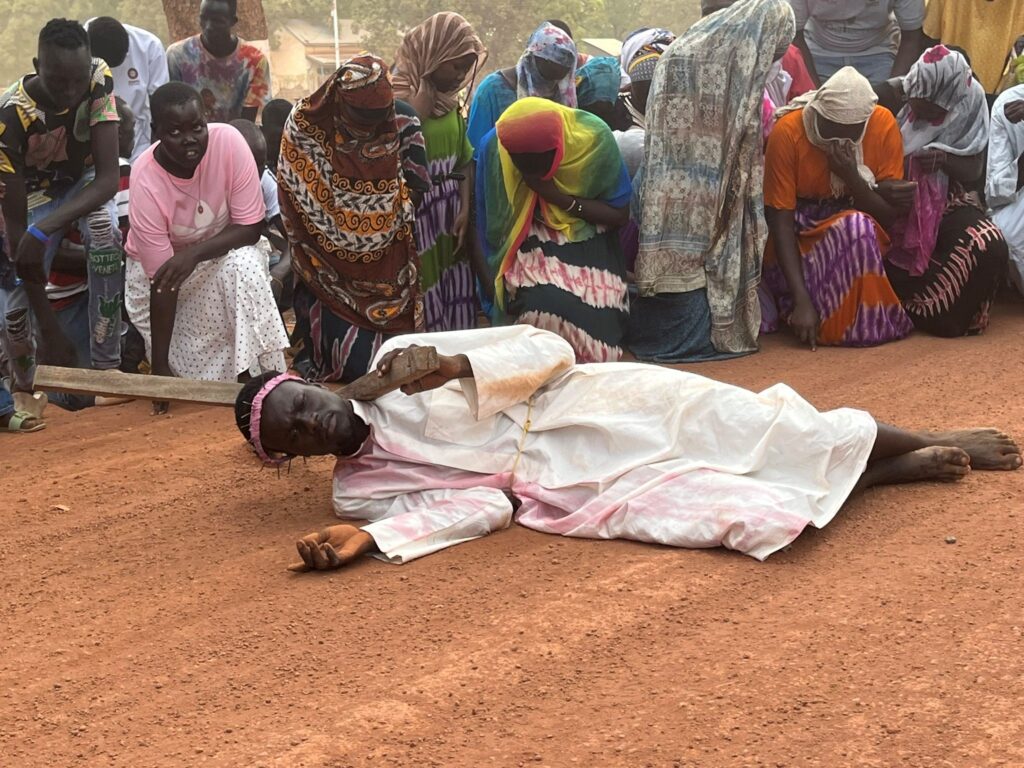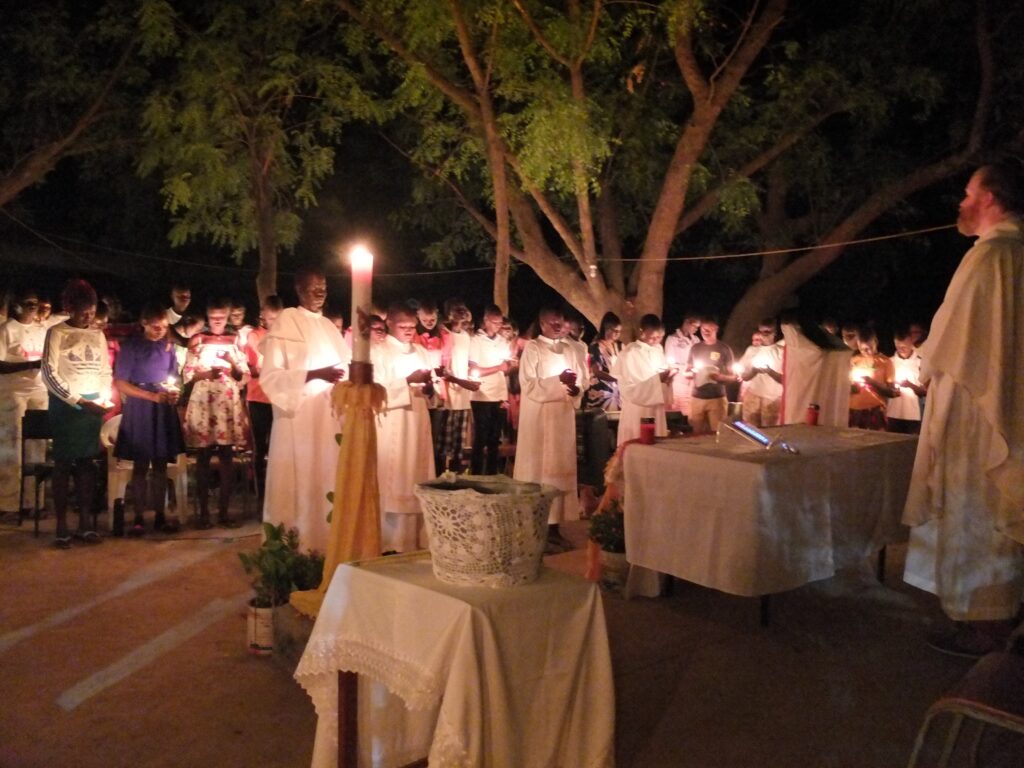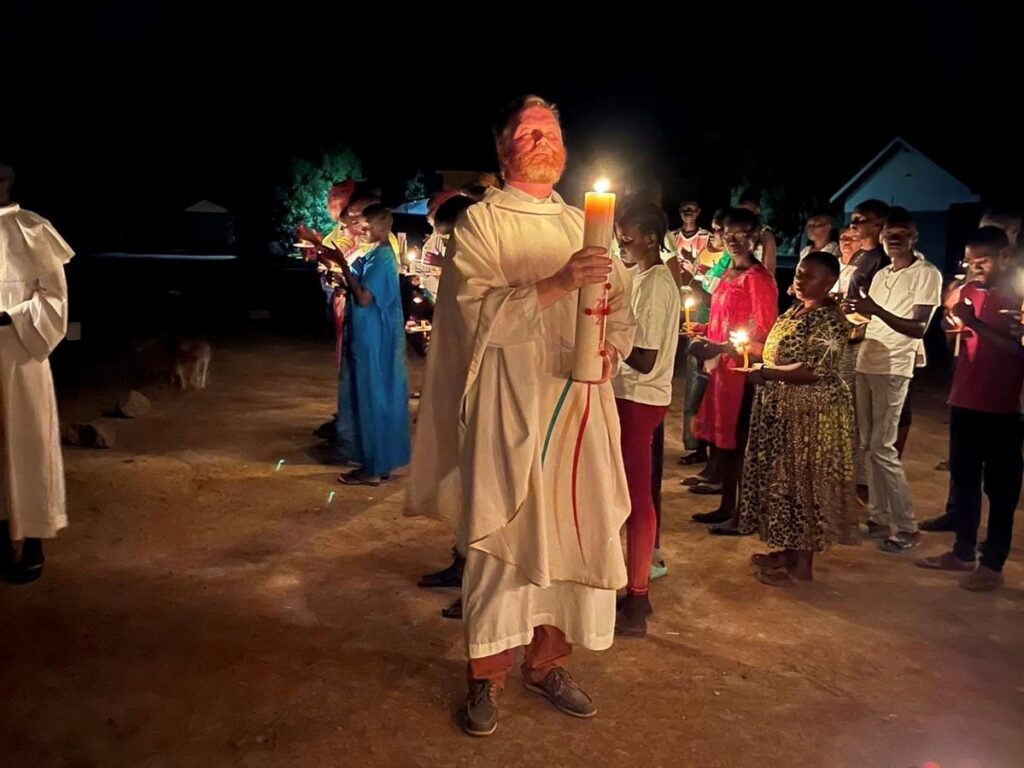Phone calls from home have bemoaned the state of the weather with a familiar regularity. Ireland, they say, is a great country, if only you could roof it. While a strong argument could be made for such a national feat of engineering, I believe that the constant rain, drizzle, mist, and downpours have shaped our psyche in a way that has left an optimistic, if somewhat damp mark on the people. It has to stop sometime, surely, or so we hope. In spite of only hazy memories of sun as a child, such as the time it was so hot the butter melted on a primary school trip to Bere Island (certainly a shock to all of us), rain certainly predominates my image of growing up in the seventies and the eighties.
So it was something of a challenge to find myself in South Sudan, with six months of heavy, if sporadic rain, followed by six months of absolute roasting aridity. After over three years here I thought I was coming to terms with the worst my new home could offer, but this year it really outdid itself. You know something is up when at the end of March the National Ministry of Education and General Instruction decided to close schools for two weeks because of an especially acute heatwave.
On the surface this could be welcomed, as many children walk more than five kilometres a day to get to school, and while the morning can be cooler, the return journey in 43ºC is a problem. The issue for us is that our primary school offers children food during the day, along with access to our clinic, and the closure meant the former was no longer available and the latter was seriously curtailed. The school made an effort with a mobile outreach by our nursing team into the community to help support those in most urgent need.
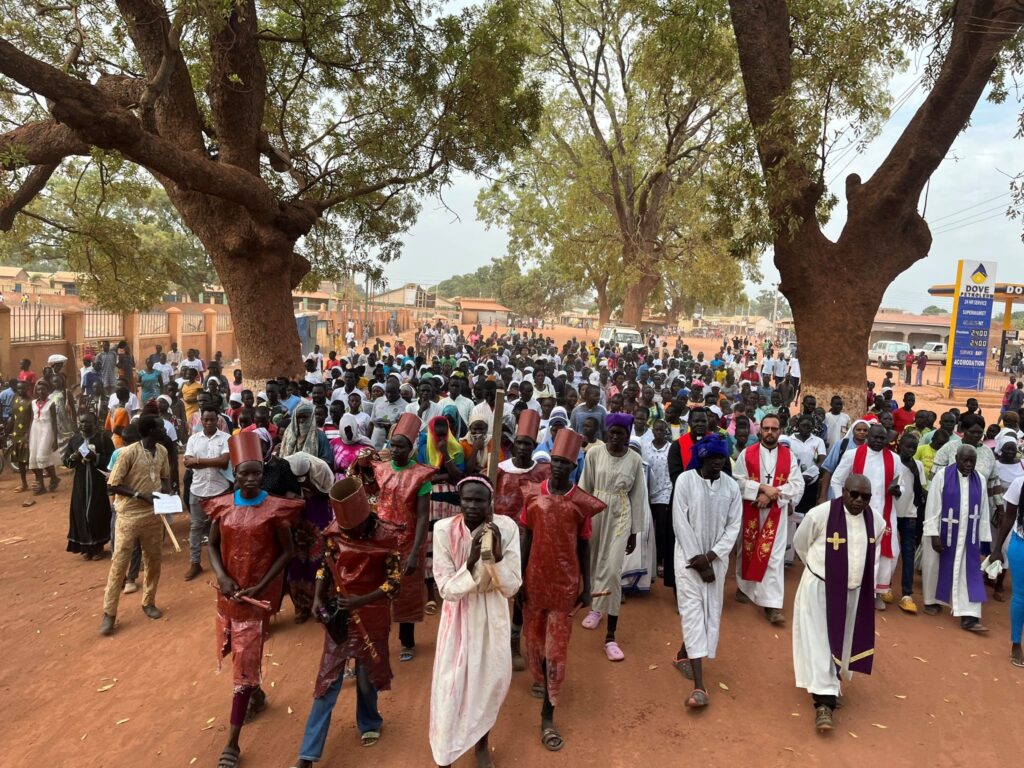
Our secondary school, despite being a boarding school, was ordered to close too and most students had to head home. A small group of about forty remained, as they lived far enough away that it would have been almost impossible to make it home and return again. So, our community for Easter this year was greatly diminished, but still full of life. Our Palm Sunday procession from the convent to the secondary school was solemn and prayerful. I had considered getting a donkey, but after an unfortunate incident during an outdoor Nativity production in a barrio in Caracas that had Mary and Joseph walking most of the way to Bethlehem (a story for another day), I swore I’d never work with animals again!
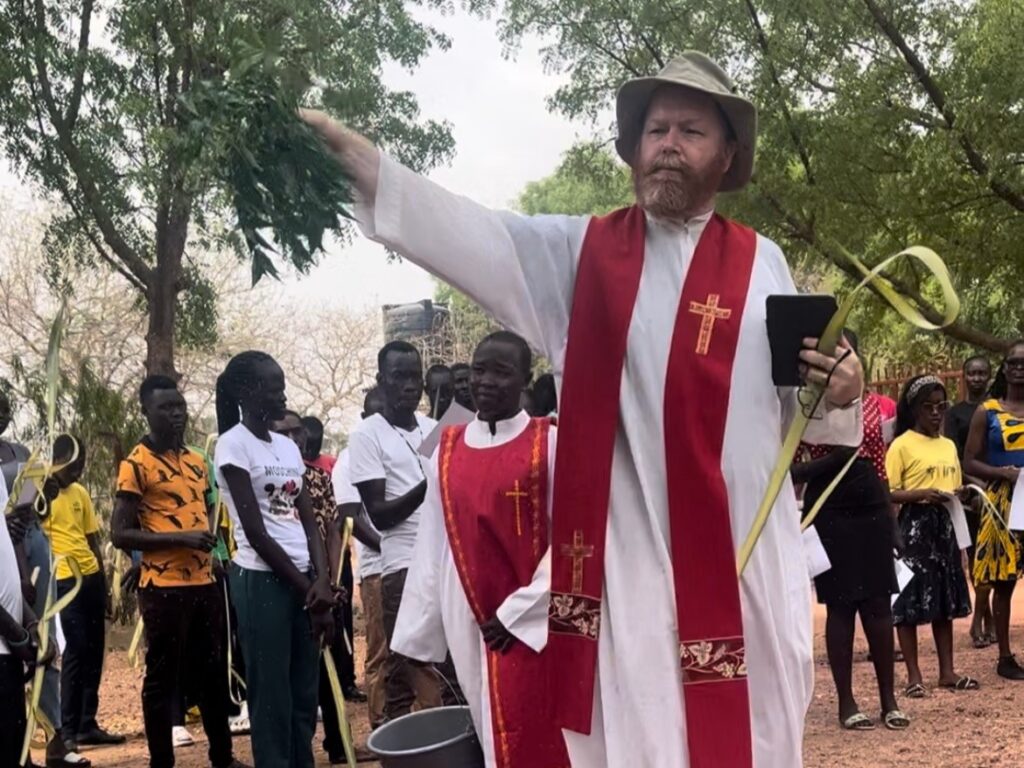
During Holy Week the University continued, heatwave or no. The lecture halls have a corrugated metal roof, but no ceiling, turning them in to a large-scale oven by the early afternoon. In fairness to the students, they did not complain, especially as exams are beginning this coming Monday. We bought extra water pots and placed the around the campus to help alleviate the problem. This year we’re hoping to fix up the building completely, installing windows, a proper floor, ceilings, and (God willing) some fans.
“No matter how overwhelming the darkness, the light of one Easter candle is enough to set the world on fire.”
Maundy Thursday’s Mass of the Last Supper was beautiful. It began in the cool of the later afternoon, just before the sunset. Our twelve Apostles were drawn from students, interns, teachers, members of the clinic team, and people from the local community. The washing of the feet by Jesus in John’s Gospel was a powerful reminder for all of us of the need to see the ministry we offer as an act of humble service. Like Pope Francis washing the feet of women in a prison in Rome this year, all that we do should try to echo the authenticity and humility of Jesus.
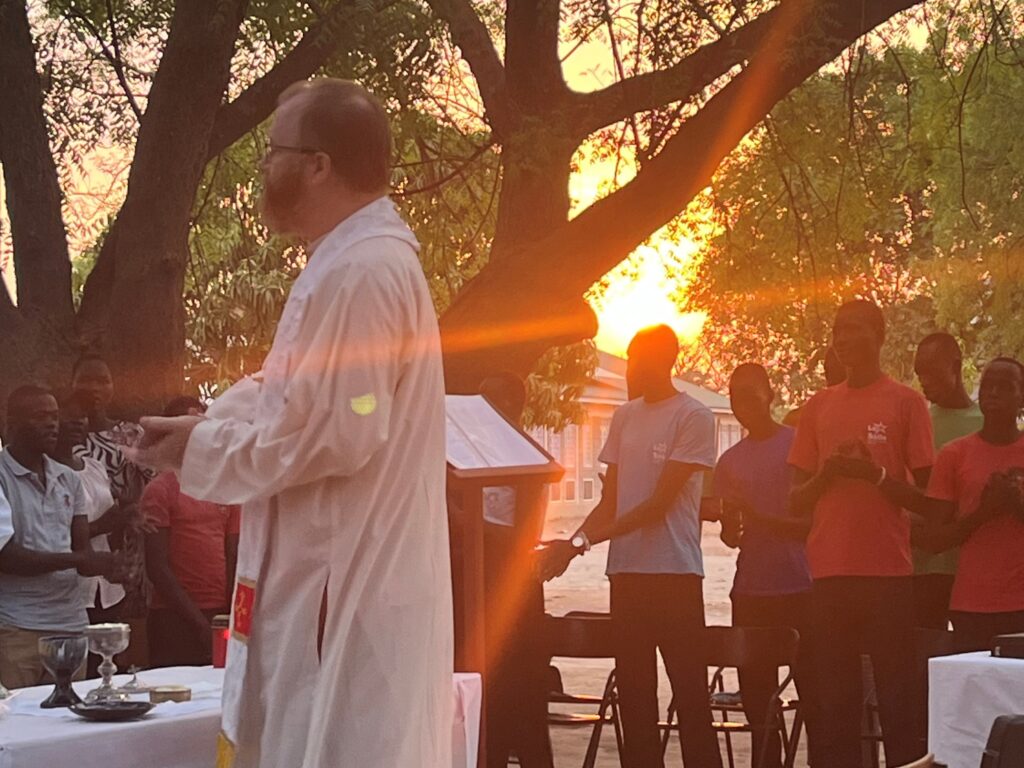
On Good Friday at 7:00am we ferried all our students to Sacred Heart Parish in Rumbek for the Stations of the Cross. The Loreto Interns had been practicing all week and getting costumes ready to lead the event. It was a live-action Stations and we made our way through the centre of the town towards Holy Family Cathedral. As we walked, sang, and prayed, you could see that those we passed were moved. There is something visceral about the suffering and humiliation Jesus endured for us that speaks to all hearts. On arrival at the Cathedral, Jesus and the two thieves were tied to their crosses and hoisted into position. After finding a bit of shade, I spent the rest of the liturgy praying fervently that the crosses wouldn’t collapse and our students wouldn’t be crushed. Thankfully, our Romans knew their jobs.
- Loreto Interns leading the Stations of the Cross on Good Friday, in Rumbek, South Sudan.
- “Jesus falls a third time” – the Stations of the Cross on Good Friday, in Rumbek, South Sudan.
The highlight of Easter is of course the Vigil. The entire celebration from the lighting of the Paschal fire and blessing of the candle, to the readings from the Old and New Testaments, the renewal of our baptismal vows, and the Eucharist are liturgy at its best. The symbols of fire and water, light and darkness, hope and resurrection would move even the most stoic of hearts.
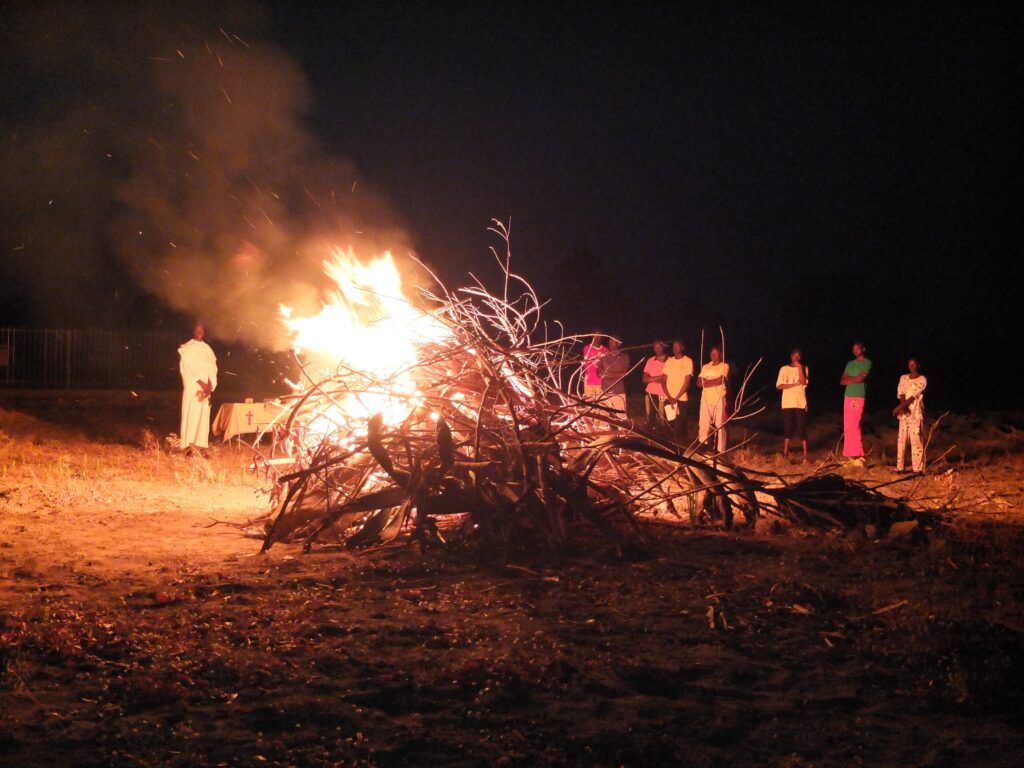
As you can see from the photos, our teachers in Loreto were all in for the preparation of the Paschal fire and the flames reached up to Heaven itself. As South Sudan continues to struggle in these early years of independence and persistent difficulties are everywhere, it is good to remember the promise of our Catholic faith, that no matter how overwhelming the darkness, the light of one Easter candle is enough to set the world on fire.
- Renewal of Baptismal promises at the Easter vigil, with Fr Alan Neville MSC in Rumbek, South Sudan.
- Fr Alan Neville MSC at the Easter vigil procession in Rumbek, South Sudan.
Happy Easter,
Fr Alan
Read more from Fr Alan’s missionary journey in South Sudan:
- Looking for a Sign on the Way to South Sudan
- Building a Better Future in South Sudan
- Christmas Greetings from Fr Alan in South Sudan
- A Cup of Sugar and Maybe a Goat
- Mock Exams and Real Life in South Sudan
- As Easy as Baking a Cake
- Holy Week on the Move
- Three Arrivals and a Party
- Celebrating the Missionary Life
- Seeds of Hope
- Young People Fighting COVID-19 in Rumbek
- Ticket to Ride
- Lions, Snakes, and the World’s Deadliest Predator
- Vaccine Status: Denied
- Christmas in South Sudan
- A Bigger Shovel
- A Week in the Life of Loreto – Bishops, graduations, an ambassador, and the Pope
- Sowing Seeds
- A visit from the MSC Superior General
- Advent
- Do They Know It’s Christmas Time?
- The Papal Visit
- Life Goes On
- Give Peace A Chance
- The Surprising Grace of Hospitality: Part 1
- Everyone is included, The Surprising Grace of Hospitality: Part 2
- Highs and Lows in South Sudan
- Those Who Can, Teach
